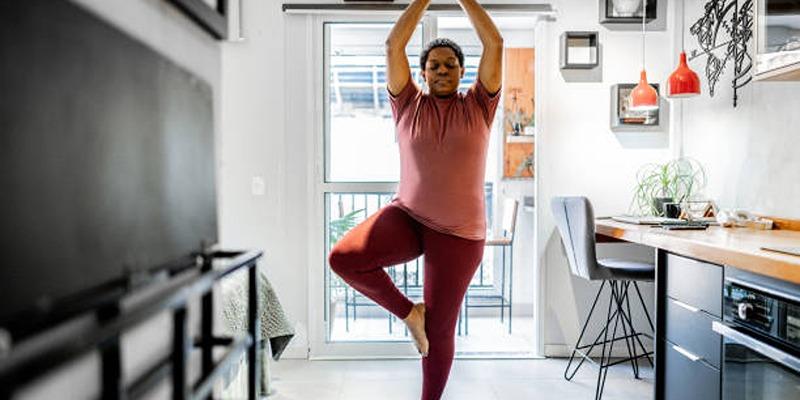How to Solve Problems During Your At-Home Workouts
Exercising on our own at home is another common and reasonable thing now. During this regime, people can easily forego the time required to get to a gym, and the advantage of exercising wherever and whenever is a no-brainer. Nevertheless, exercising at home has its own pros and cons. Below, well discuss these issues and provide an exhaustive explanation to ensure you keep fit without frustration ever coming in between you and your sweat.
1. Lack of Motivation
 One of the biggest challenges that people face relating to exercising at home is motivation. Failing to go to the gym and having no group exercises to focus on, it is very difficult to wake up and exercise. Sitting on your comfortable sofa, watching TV or doing household chores appear to be more attractive than exercising.
One of the biggest challenges that people face relating to exercising at home is motivation. Failing to go to the gym and having no group exercises to focus on, it is very difficult to wake up and exercise. Sitting on your comfortable sofa, watching TV or doing household chores appear to be more attractive than exercising.
Solutions to Stay Motivated
- Set Clear Goals: Make your goal, no matter if you want to lose weight, gain muscles or just exercise every day. These goals should be broken down to further more manageable sub-goals.
- Create a Schedule: Exercise as if it were a job. Schedule them at the same time in the day for it to become part of a routine.
- Find a Workout Buddy: You need to engage someone else, whether it can be live or even remotely, to become the responsible person to report to.
- Track Your Progress: A fitness diary can be replaced by a fitness journal or an application that will track your progress over time. Watcha is ready to see some progress We see that something is working towards our advantage This is encouraging.
2. Limited Space and Equipment
Many people feel restricted by the lack of space or equipment at home. Small apartments or shared living spaces may not have enough room for exercise. Additionally, not everyone has access to weights, resistance bands, or treadmills, which can make workouts feel incomplete.
Solutions for Space and Equipment Issues
- Optimize Your Space: Rearrange furniture to create a temporary workout area. A small space can accommodate most bodyweight exercises.
- Use Household Items: Substitute equipment with items like water bottles, backpacks filled with books, or a sturdy chair for step-ups.
- Focus on Bodyweight Exercises: Exercises like push-ups, squats, lunges, and planks dont require any equipment but are highly effective.
- Invest in Compact Equipment: Resistance bands, yoga mats, and foldable dumbbells are space-saving tools that enhance your workouts.
3. Distractions from Family or Roommates
Exercising at home often means sharing your space with others, which can lead to interruptions. Whether its a noisy household, unplanned conversations, or shared living areas, distractions can disrupt your focus and routine.
Solutions to Manage Distractions
- Communicate Clearly: Inform your family or roommates about your workout schedule so they know when not to disturb you.
- Choose the Right Time: Work out during quiet periods, such as early mornings or late evenings.
- Create Boundaries: Use visual cues like wearing workout gear or placing a sign to signal that youre unavailable.
- Use Headphones: Block out noise and distractions with a good playlist or guided workout audio.
4. Risk of Poor Form and Injury
When exercising without professional supervision, theres a higher risk of performing exercises incorrectly, which can lead to injuries. Without proper guidance, you may also miss out on maximizing the benefits of your workouts.
Solutions to Maintain Proper Form
- Learn from Experts: Watch video tutorials by certified trainers to understand the correct techniques.
- Use a Mirror: Exercise in front of a mirror to monitor your posture and movements.
- Start Slow: Begin with simple exercises and focus on mastering them before progressing to advanced routines.
- Consider Virtual Coaching: Many trainers offer online sessions where they can guide and correct your form remotely.
5. Lack of Variety in Workouts
Repetitive routines can quickly become boring and may even lead to fitness plateaus where progress slows or stops. Variety is essential to keep workouts engaging and effective.
Solutions to Add Variety
- Mix Workout Types: Combine strength training, cardio, flexibility, and mobility exercises to keep things fresh.
- Try Online Classes: Explore platforms offering yoga, HIIT, dance, or Pilates to discover new workouts.
- Set Goals for New Skills: Work towards achieving fitness milestones, such as mastering a new yoga pose or completing a certain number of push-ups.
- Join Challenges: Participate in fitness challenges or online competitions for motivation and variety.
6. Feeling Isolated
One downside of home workouts is the lack of social interaction. Exercising alone can sometimes feel isolating, which may lower enthusiasm and commitment.
Solutions to Combat Isolation
- Join Virtual Communities: Participate in online fitness groups where you can share your journey and interact with others.
- Attend Live Classes: Many platforms offer live-streamed workouts where you can engage with instructors and other participants in real time.
- Workout with Friends: Coordinate workouts over video calls or invite a family member to join you.
- Celebrate Achievements Publicly: Share your fitness milestones on social media to receive encouragement and support.
7. Struggling with Self-Discipline
At home, the lack of external pressure or accountability makes it easy to procrastinate or skip workouts altogether.
Solutions to Build Self-Discipline
- Make a Commitment: Treat workouts like non-negotiable appointments in your calendar.
- Use Rewards: Motivate yourself with small rewards for completing a workout, such as watching a favorite show or enjoying a healthy treat.
- Stick to a Plan: Follow a structured workout program that outlines what you need to do each day.
- Track Habits: Use apps to monitor your streaks and aim to maintain consistency.
8. Environmental Issues
 Your home environment might not always be conducive to exercise. Factors like poor lighting, lack of ventilation, or extreme temperatures can affect your performance.
Your home environment might not always be conducive to exercise. Factors like poor lighting, lack of ventilation, or extreme temperatures can affect your performance.
Solutions for Environmental Challenges
- Improve Lighting: Exercise in well-lit areas to maintain energy and focus.
- Regulate Temperature: Use fans, heaters, or air conditioning to make the space comfortable.
- Work Out at Optimal Times: Choose times when the temperature and lighting are most suitable, such as early mornings or evenings.
Conclusion
Working out at home offers immense flexibility and convenience, but its not without its challenges. From lack of motivation to limited space and distractions, these problems can hinder your progress if left unaddressed. By implementing the solutions outlined above, you can create a more effective, engaging, and enjoyable fitness routine at home. Remember, the key to success is consistency and adaptability. With the right mindset and strategies, you can overcome any obstacle and achieve your fitness goals from the comfort of your own space.












